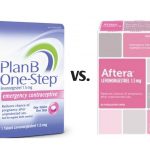Opiates Vs Opioids: Differences, Similarities, Examples

What are opiates?
Opiates include controlled prescription substances that are derived from Opium, which is a chemical that occurs naturally in poppy seeds and plants. These drugs are used clinically for treating mild to severe pain in patients. Due to their intensely calming effects, Opioids have tremendously high rates of abuse which, in many cases, can lead to addiction.
Opium comes from the milky sap of a flower called the opium poppy. The earliest reference to opium use and the cultivation of opium poppies comes from Mesopotamia around 3,400 B.C.
The ancient Sumerians—who inhabited the southernmost region of Mesopotamia in modern-day Iraq and Kuwait—referred to the bright red poppy flowers as hul gil, “the joy plant.”
Opium cultivation spread to the ancient Greeks, Persians, and Egyptians. Opium use in ancient Egypt flourished under the reign of King Tutankhamen, around 1333-1324 B.C., and the Greek author Homer referred to opium’s healing powers in the Odyssey.
These ancient societies used opium to help people sleep, relieve pain, and even calm crying children. There is also some evidence that opium-based medicines were used as anesthesia during surgery. They may also have used the drug recreationally, though they probably weren’t aware of its addictive effects.
Opium was likely introduced to China and East Asia in the sixth or seventh century A.D. through trade along the Silk Road, which connected the Mediterranean cultures of Europe to central Asia, India, and China. The region stretching from Afghanistan and Pakistan eastward into India, Myanmar (Burma) and Thailand still produce much of the world’s opium poppies.
Opiates attach to things called receptors on nerve cells in your brain, spinal cord, and other places to block pain messages that your body is sending to your brain. They also trigger your brain to release dopamine, a chemical that makes you feel good.
According to the World Health Organization, the term “opioids” includes compounds that are extracted from the poppy seed as well as semi-synthetic and synthetic compounds with similar properties that can interact with opioid receptors in the brain.
What’s the difference between opiates and opioids?
Some people carefully distinguish between these two groups of narcotic drugs when they speak about them. Other people use the two terms interchangeably or prefer one over the other. Our language is evolving; lately many people, especially journalists and politicians, are tending to refer to all of these drugs as “opioids.”
Both opiates and opioids are used medically. They may be prescribed for pain relief, anesthesia, cough suppression, diarrhea suppression, and for treatment of opiate/opioid use disorder.
Both opiates and opioids may also be used illicitly by people with substance use disorder.
The main difference is in how opiates and opioids are made.
Opiates: Opiates are chemical compounds that are extracted or refined from natural plant matter (poppy sap and fibers). Examples of opiates:
• Opium
• Morphine
• Codeine
• Heroin
Opioids: Opioids are chemical compounds that generally are not derived from natural plant matter. Most opioids are “made in the lab” or “synthesized.”
Though a few opioid molecules — hydrocodone (e.g., Vicodin), hydromorphone (e.g., Dilaudid), oxycodone (e.g., Oxycontin, Percocet) — may be partially synthesized from chemical components of opium, other popularly-used opioid molecules are designed and manufactured in laboratories. (The phrase “synthetic opioid” is considered redundant; nearly all opioids are synthesized.)
The pharmaceutical industry has created more than 500 different opioid molecules. Some are widely used medically, some are not. Examples of well-known opioids used medically in the U.S.:
• Dextromethorphan (available in the U.S. without prescription as, e.g., NyQuil, Robitussin, TheraFlu, Vicks)
• Dextropropoxyphene (e.g., Darvocet-N, Darvon)
• Loperamide (e.g., Imodium)
• Hydrocodone (e.g., Vicodin)
• Oxycodone (e.g., Oxycontin, Percocet)
• Oxymorphone (e.g., Opana)
• Meperidine (e.g., Demerol)
• Methadone (e.g., Dolophine)
• Fentanyl/fentanil (e.g., Ultiva, Sublimaze, Duragesic patch)
• Carfentanyl/carfentanil (e.g., Wildnil, for veterinary use)
Similarities between opiates and opioids
Both groups of drugs are “narcotics.” (The word “narcotic” simply means sleep-inducing or numbness-inducing (from the Medieval Latin narcoticus, from the Greek narkoun “to benumb.”)
It’s most precise to refer to both groups of narcotic drugs as “opiates and opioids,” the naturally derived and the synthetic. But currently, when people wish to refer to all of these drugs, they often use the term “opioid.”
If a person is dependent on (“addicted to”) one particular opiate or opioid drug, whether it’s medically prescribed or illicitly obtained, they may find that switching to a different opiate or opioid can help maintain their dependency or addiction. That is, substituting one opiate or opioid for another may help prevent withdrawal symptoms. Most of us have heard stories of people with real, actual, pain who became dependent on prescription pain-relieving narcotic drugs, then switched to illicit opioids or the opiate heroin when the medically supplied narcotics ran out.





